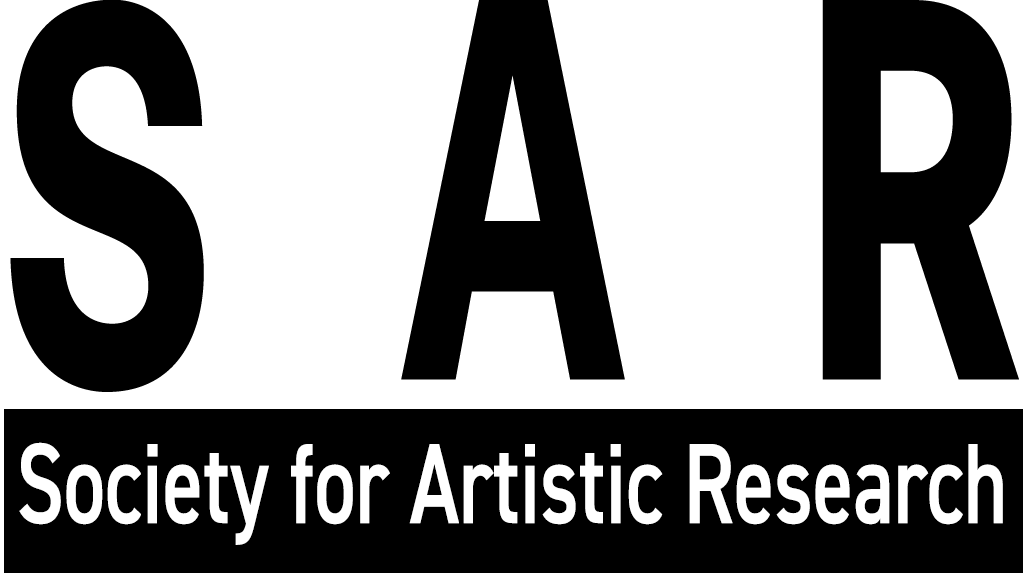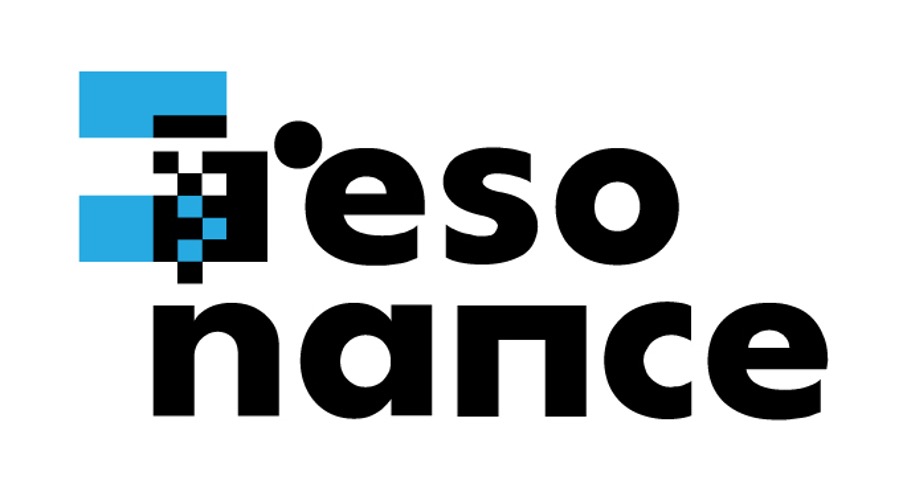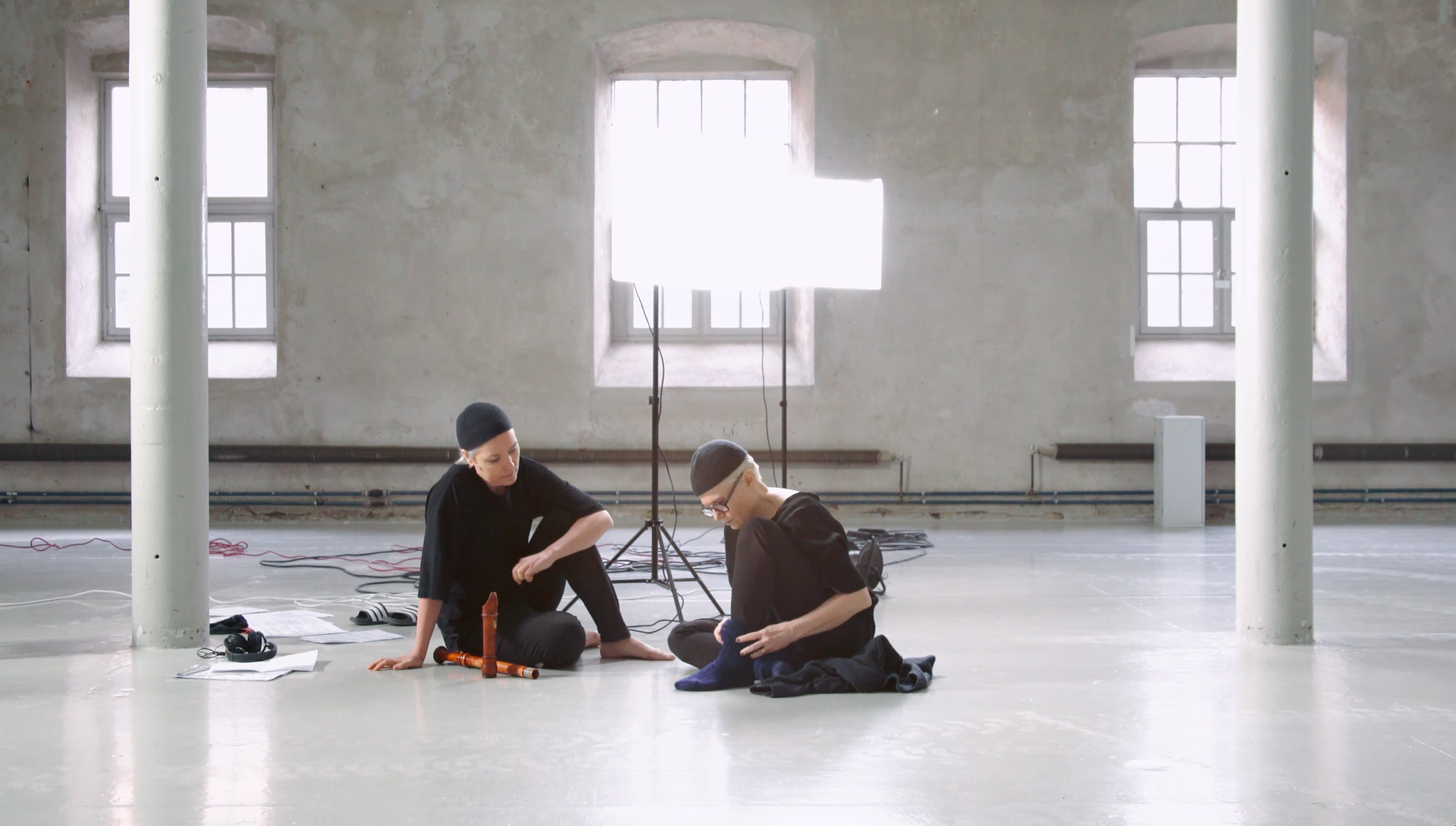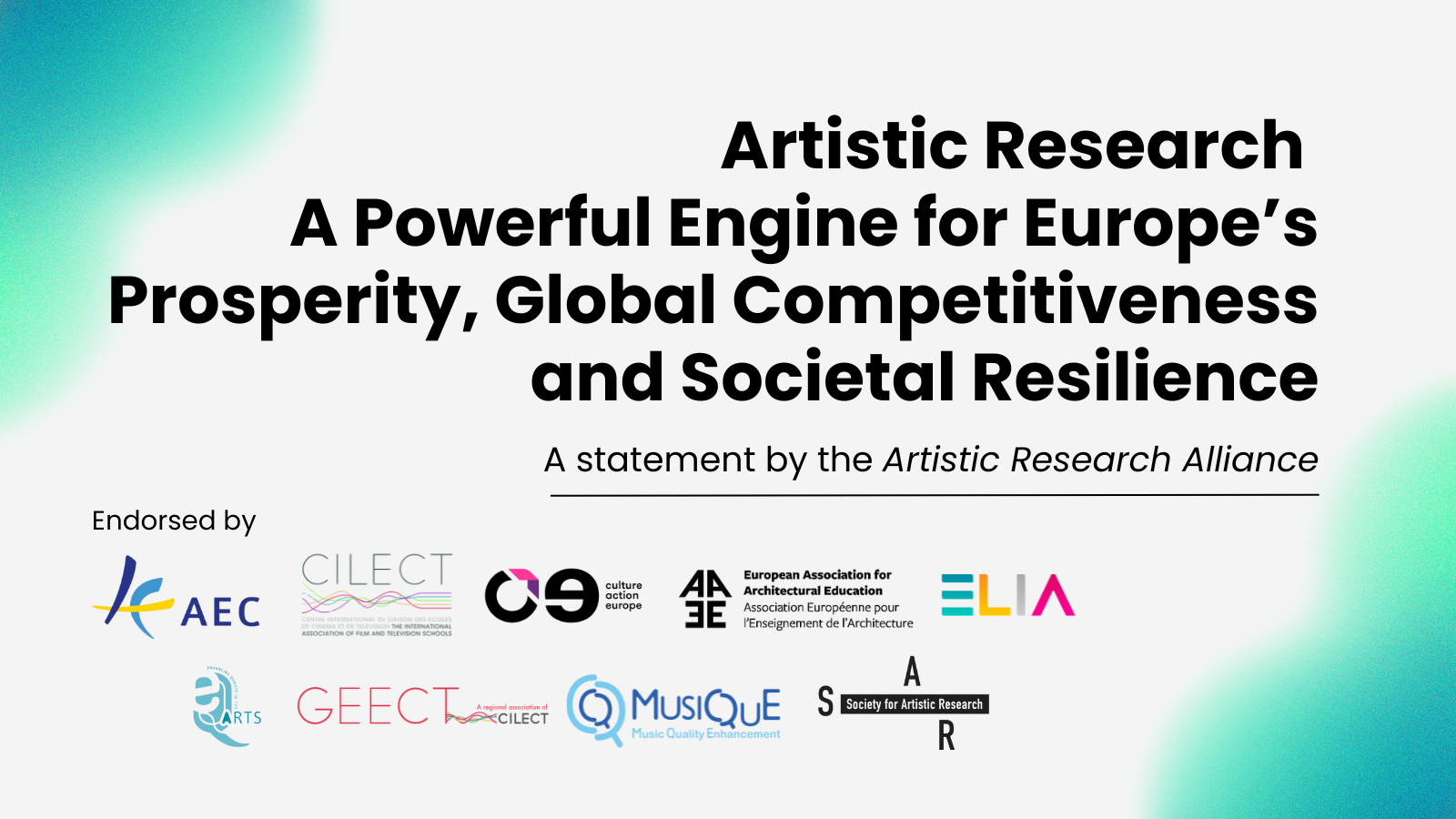Annual Prize for Excellent Research Catalogue Exposition
About
Each year, the prize for excellent Research Catalogue exposition is awarded following a call for submissions and jury process. The winner is announced at the yearly SAR conference with an award prize of €500.
The Annual Prize aims to foster and encourage innovative, experimental new formats of publication and to give visibility to the qualities of artistic research artefacts.
Anyone is invited to make a submission, however the exposition must have been published (not only shared) on the RC platform. The language used in the exposition must be English.
Each year a new jury, consisting of a member of the SAR Executive Board, representatives from a Portal Partner and a former prize winner, is appointed. Following an in-depth review, a shortlist is made public.
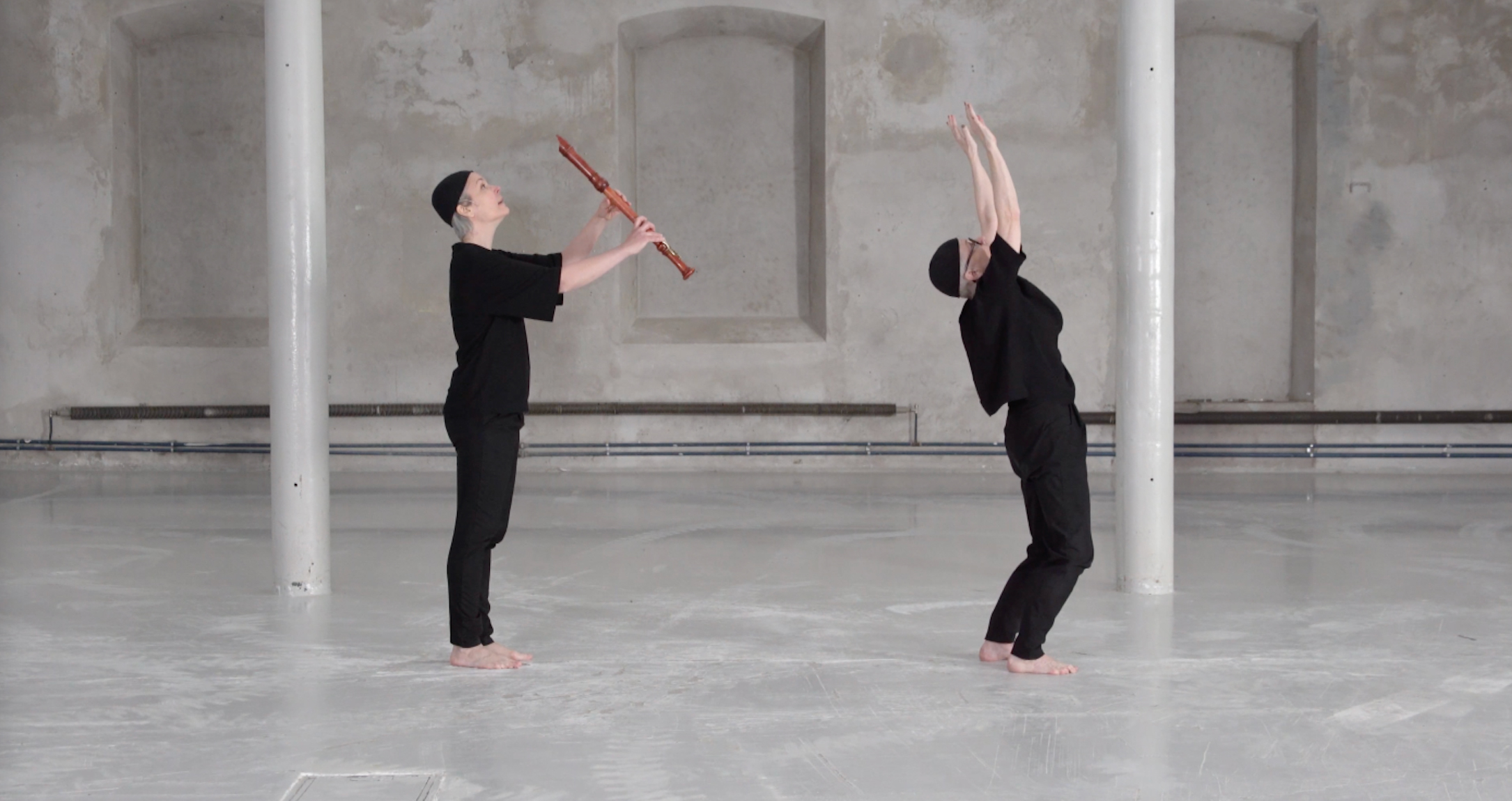
Winner of the RC Prize 2024, Kerstin Frödin and Åsa Unander-Schairin, Fragmente2
See Past Call and Conditions (Deadline 01.02.25)
THE RC PRIZE 2025
The 2025 Call for Submissions will be launched later in the autumn 2025, including submission guidelines. Sign up to the SAR newsletter to be the first to know when the call is out!
Sign up to the SAR newsletter by creating a profile on the RC and checking the 'announcement' box.
2024 - Winner and Shortlist
Winner: Kerstin Frödin and Åsa Unander-Schairin
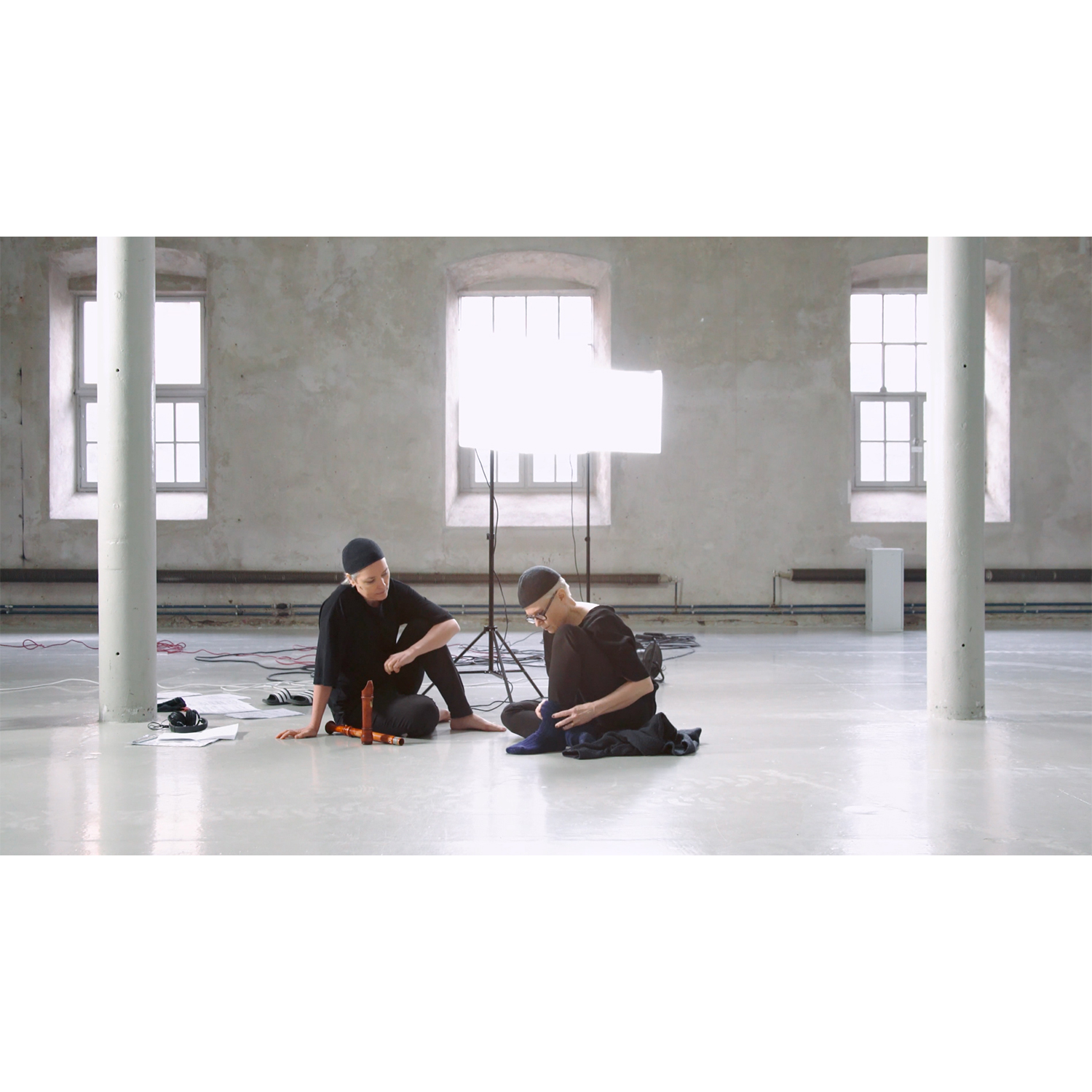
The jury hereby awards first place to the exposition Fragmente2 for its integrity and expositionality. This is the collective work of a two-member research team and presents as a cleanly crafted exposition, which communicates a rich ethnographic study of a choreomusical collaborative work. The exposition is exploring the relationship between music and dance in artistic research. Oscillating between final documentation and a sharing of the process archive through presenting numerous fragments, the reader gets invited to create their own experience and connect it to proposed precise analyses. Although graphically simple, the exposition represents an exemplary use of multiple spaces that enable different modes of exposing and experiencing the research materials on the Research Catalogue.
Finalist: Danica Maier, Sarah Bennett, Andrew Bracey
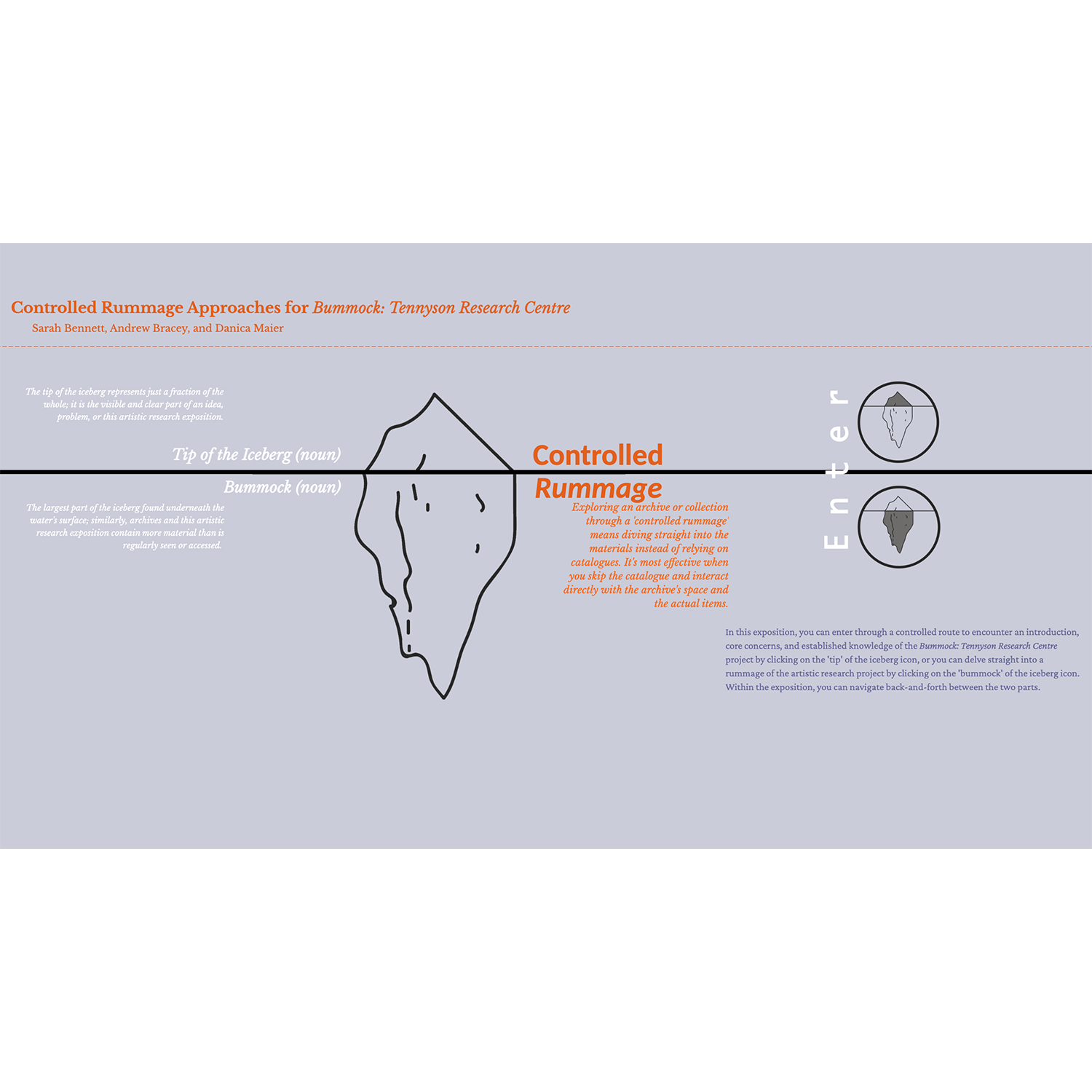
The exposition Controlled Rummage Approaches for Bummock: Tennyson Research Centre is structured in a coherent way according to a conceptual basis and serves as a rigorous documentation of the documented research project. It creates two different points of entry and engagement with the archives and offers a performative way of connecting with this research project. Laying out archival materials in addition to texts and media enables the reader to navigate their own path through the archival objects from the TRC and the artworks created. A collective work of a three-member research team, the graphical refinement and well-thought-out structure makes this a strong demonstration of the Research Catalogue’s potentials.
Finalist: Leanna Moran
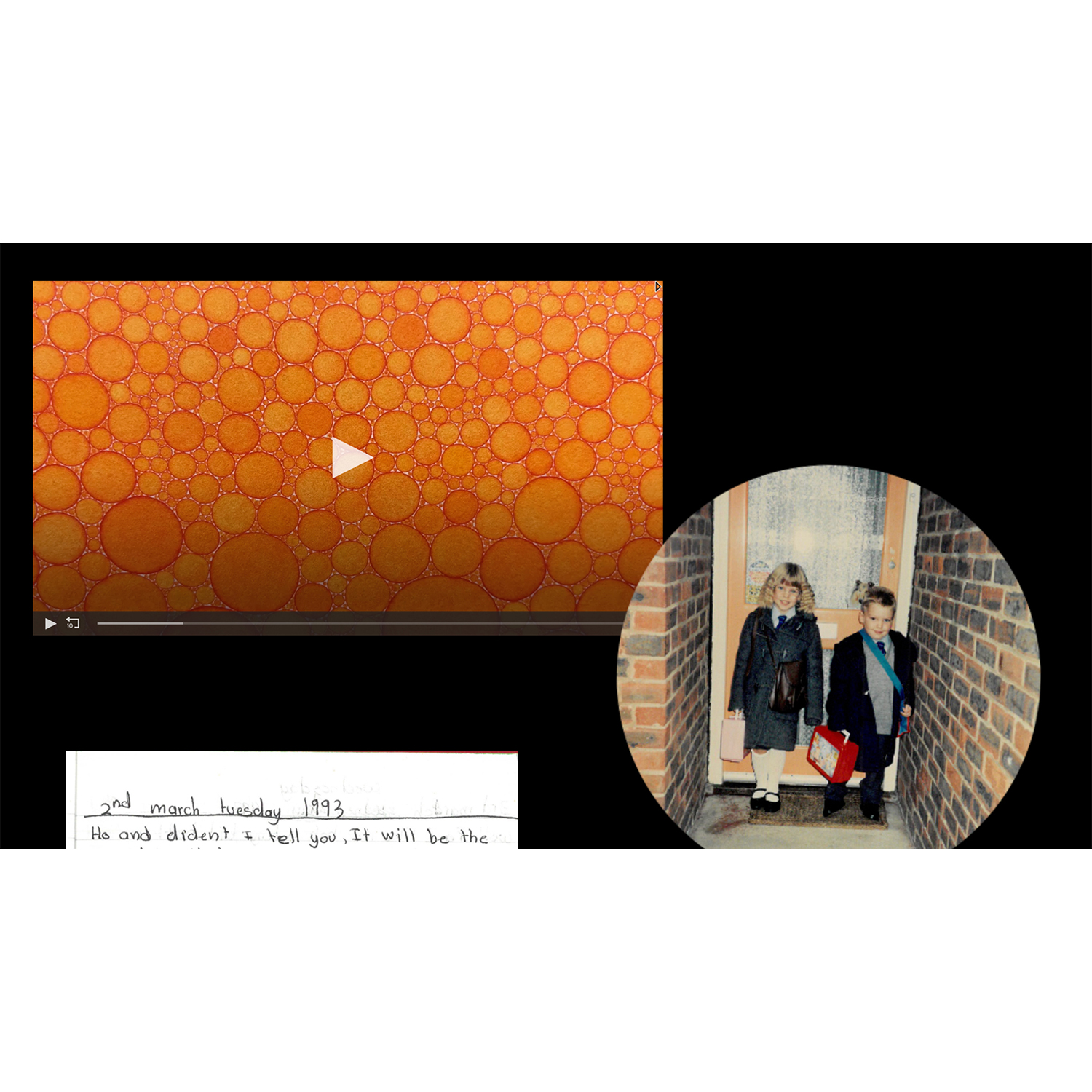
The exposition Why I Paint Thousands of Circles shows the fragmented collage of materials as an "ar(t)chaeological archive” and invites an intuitive mode of navigation between both personal and public archival materials. With an auto-ethnographic orientation, this exposition combines highly intimate autobiographical vignettes and newspaper fragments to expose the interweaving and co-relation of the highly-charged personal and socio-political histories within mid 90's working class North West London. Presented from the position of an emerging researcher, this exposition engages with the Research Catalogue in a very individual, exploratory way, not seeking to present a finished work. The consistency of the presentation, which is presented in a very dense vertical exposition, is its strength – the exposition appears to not be about answering questions, but about consistently asking questions.
2023 - Winner and Shortlist
1st place: Thomas Pearce
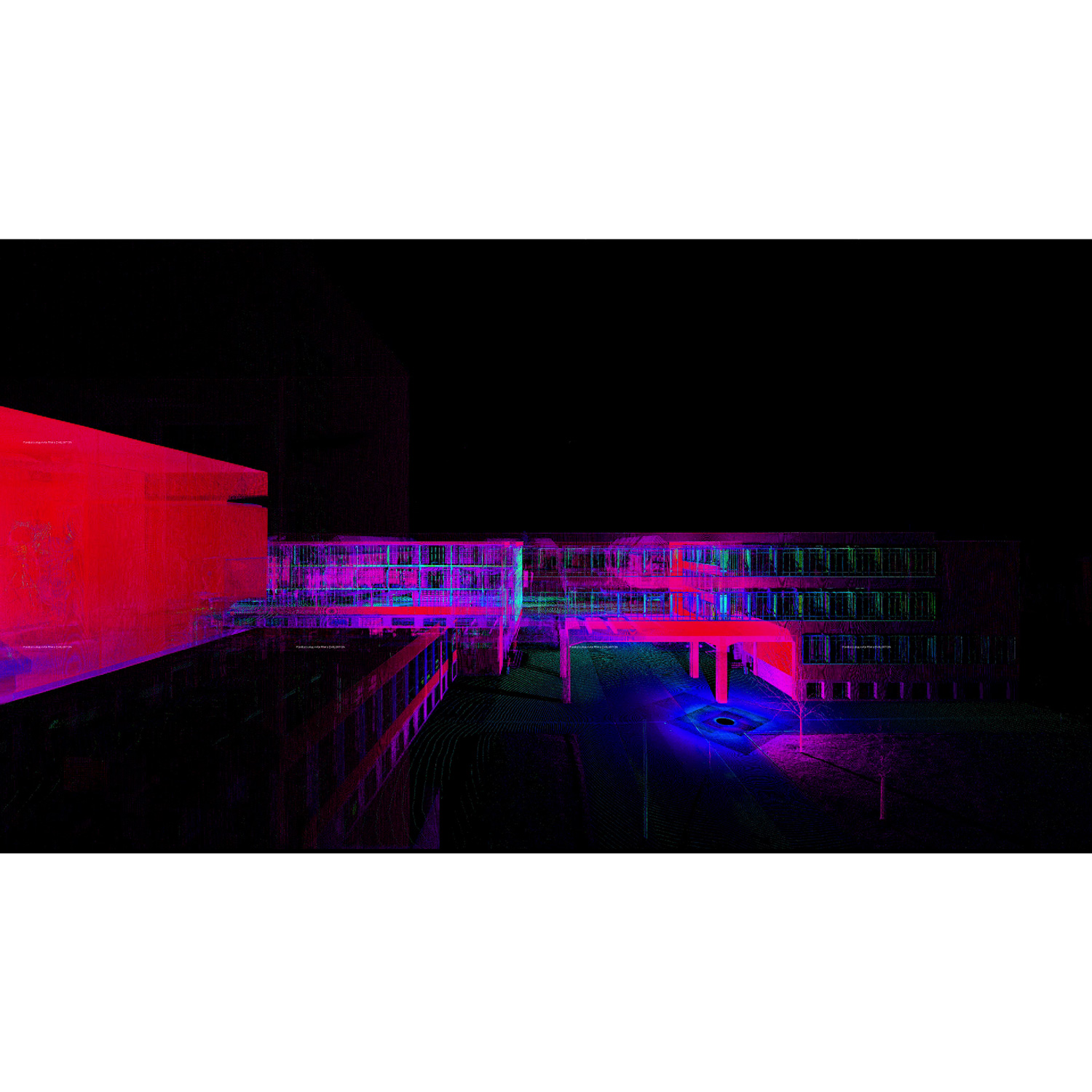 The jury was impressed by the exposition “On the Indeterminate Training Technologies of a Reconstructed Bauhaus Choreographer. A Research Practice Between Speculative Histography, Architectural Invention, and Performative Co-enactment” that is multi-layered and complex. It re-enacts a series of performance-based events that reconstructs the life of a fictional choreographer, in five instances. It relates the topography of the performing place with the topography of the screen in a novel way, presenting the reconstruction process and providing insights into the research underlying practice. The exposition mirrors the combination of several methods used in the performative research. Navigation allows users to connect the acts of the performance with the exhibition pages in a backward design: we enter the resulting piece and follow its reconstruction.A fundamental benefit is interdisciplinarity, in addition to the innovative and precise solution to the form of exposition, the interdisciplinary nature, the author’s dialogue with his own solution and the author’s discussion of the ethical limits of the research subject should also be appreciated.
The jury was impressed by the exposition “On the Indeterminate Training Technologies of a Reconstructed Bauhaus Choreographer. A Research Practice Between Speculative Histography, Architectural Invention, and Performative Co-enactment” that is multi-layered and complex. It re-enacts a series of performance-based events that reconstructs the life of a fictional choreographer, in five instances. It relates the topography of the performing place with the topography of the screen in a novel way, presenting the reconstruction process and providing insights into the research underlying practice. The exposition mirrors the combination of several methods used in the performative research. Navigation allows users to connect the acts of the performance with the exhibition pages in a backward design: we enter the resulting piece and follow its reconstruction.A fundamental benefit is interdisciplinarity, in addition to the innovative and precise solution to the form of exposition, the interdisciplinary nature, the author’s dialogue with his own solution and the author’s discussion of the ethical limits of the research subject should also be appreciated.
2nd place: Emma Cocker et al.
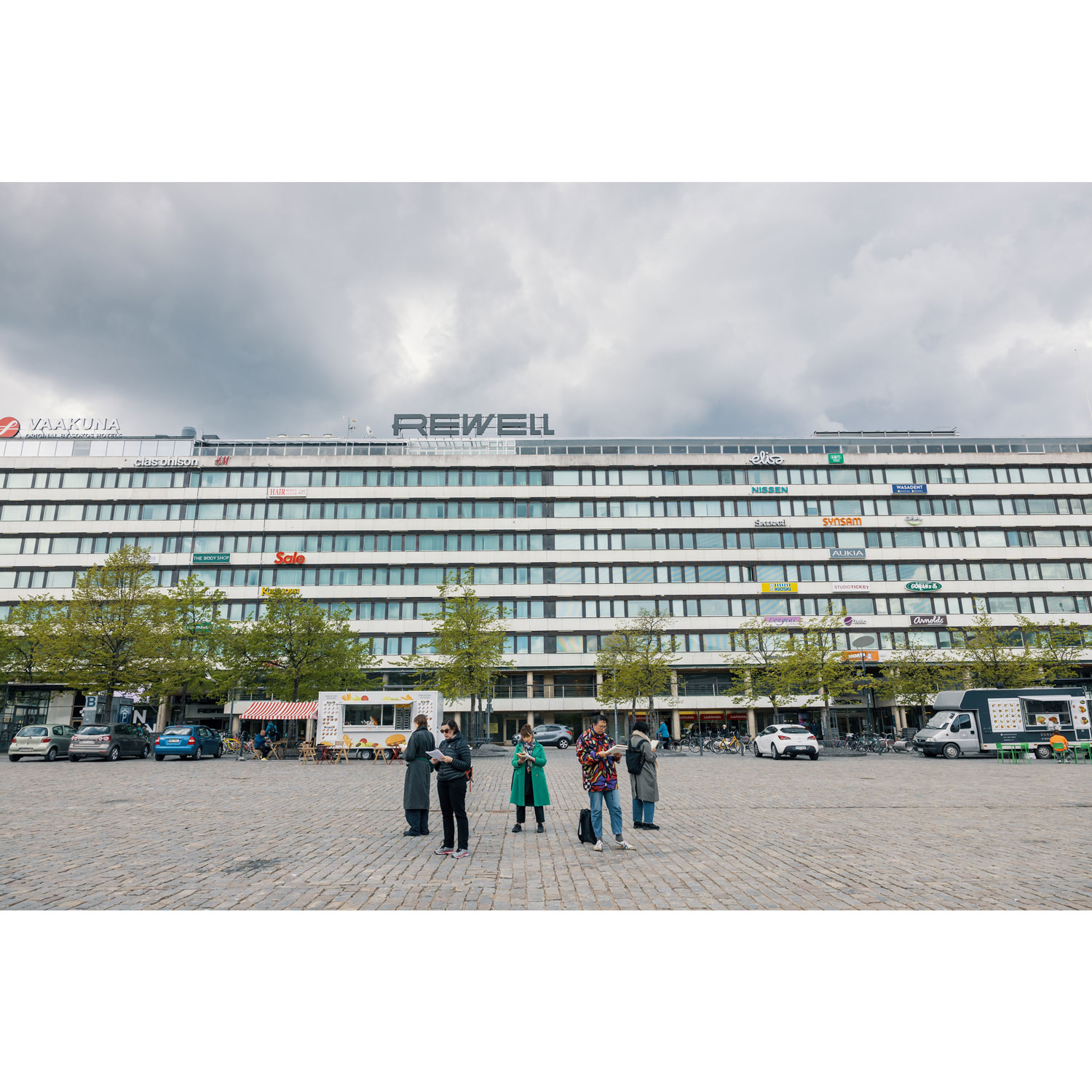 Emma Cocker, Andrea Coyotzi Borja, Cordula Daus, Lena Séraphin, Vidha Saumya5 people standing in a circle reading on a large square in front of a big 5 story concrete building with shops.The exposition “TEXTORIUM: Collaborative Writing-Reading with/in Public Space” (by Emma Cocker, Andrea Coyotzi Borja, Cordula Daus, Vidha Saumya and Lena Séraphin) represents collaborative score-based approaches to live, situated writing and reading practices. The exposition explores different agencies of language-based practices, combining direct and indirect voices from the group. The navigation in the exposition creates parallel paths between document, reflective review and insights. Overall, the exposition organises a complex web of relationships between place, language, performative reading, collective agencies. The exposition uses excellent navigation in very clear design. In view of the large research team, the successful aim to document the process should be appreciated.
Emma Cocker, Andrea Coyotzi Borja, Cordula Daus, Lena Séraphin, Vidha Saumya5 people standing in a circle reading on a large square in front of a big 5 story concrete building with shops.The exposition “TEXTORIUM: Collaborative Writing-Reading with/in Public Space” (by Emma Cocker, Andrea Coyotzi Borja, Cordula Daus, Vidha Saumya and Lena Séraphin) represents collaborative score-based approaches to live, situated writing and reading practices. The exposition explores different agencies of language-based practices, combining direct and indirect voices from the group. The navigation in the exposition creates parallel paths between document, reflective review and insights. Overall, the exposition organises a complex web of relationships between place, language, performative reading, collective agencies. The exposition uses excellent navigation in very clear design. In view of the large research team, the successful aim to document the process should be appreciated.
3rd place: Søren Kjærgaard & Torben Snekkestad
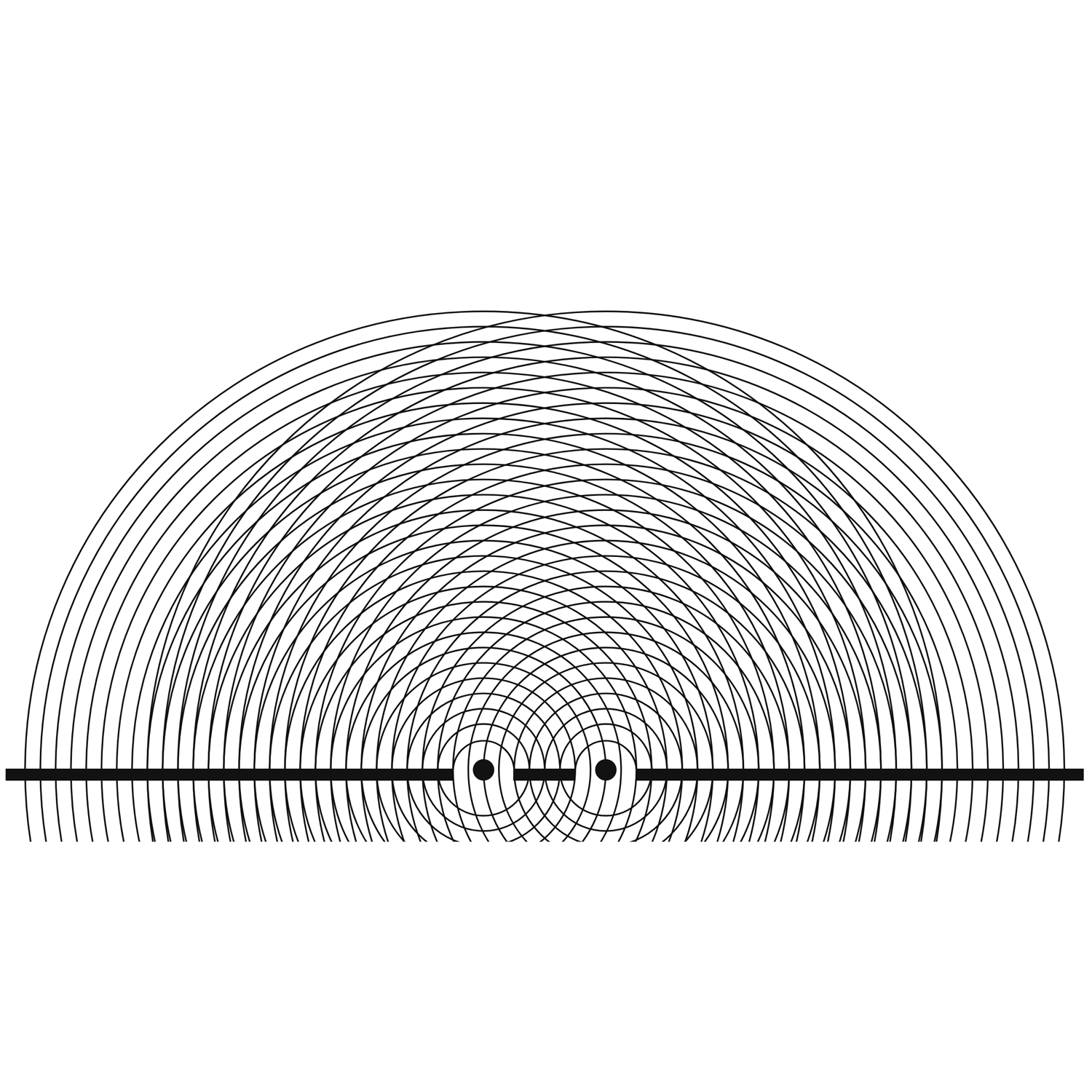 Søren Kjærgaard & Torben Snekkestad, challenges the idea of sonic identity by practice sharing of audio material and improvisation processes in his exposition “Traversing Sonic Territories (TST)”. it is not easy to convey a sound presentation in RC compared to other visual and graphic tools. The author copes with this predicament through design, navigation and illustrative visual elements and enables us to think about sonic identity, the idea of personal sound.
Søren Kjærgaard & Torben Snekkestad, challenges the idea of sonic identity by practice sharing of audio material and improvisation processes in his exposition “Traversing Sonic Territories (TST)”. it is not easy to convey a sound presentation in RC compared to other visual and graphic tools. The author copes with this predicament through design, navigation and illustrative visual elements and enables us to think about sonic identity, the idea of personal sound.
2022 - Winner and Shortlist
1st place: Andreas Berchtold
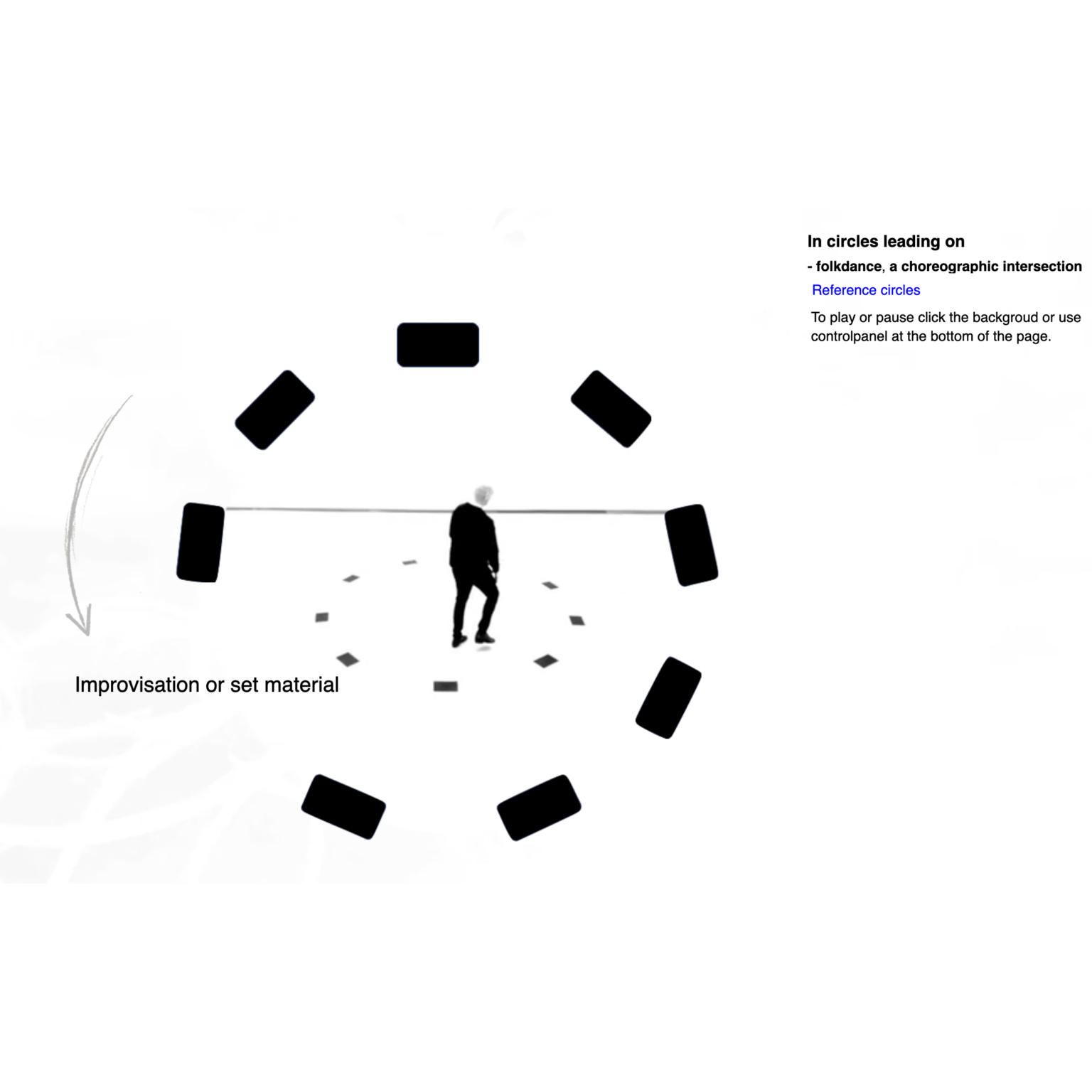 The jury highly appreciates the quality and compactness of the exhibition “In circles leading on”: It meaningfully targets a diverse audience using an original graphic design, especially the unconventional layout. Exposition is playful and thoughtful at the same time. It invites the reader to interact with the content while clearly articulating the dynamic character of the project. It is convincing that the inventive way of communicating the project’s outcome has been integral to the process of developing it. Berchtold`s exposition presents an inner point of view in close dialogue with the exhibition layout, transforming the screen into the metaphor of a stage. The individual components and tools used in the research catalogue enable the exhibition to amplify the content of the message towards differently motivated readers or viewers.
The jury highly appreciates the quality and compactness of the exhibition “In circles leading on”: It meaningfully targets a diverse audience using an original graphic design, especially the unconventional layout. Exposition is playful and thoughtful at the same time. It invites the reader to interact with the content while clearly articulating the dynamic character of the project. It is convincing that the inventive way of communicating the project’s outcome has been integral to the process of developing it. Berchtold`s exposition presents an inner point of view in close dialogue with the exhibition layout, transforming the screen into the metaphor of a stage. The individual components and tools used in the research catalogue enable the exhibition to amplify the content of the message towards differently motivated readers or viewers.
2nd place: Sheung Yiu
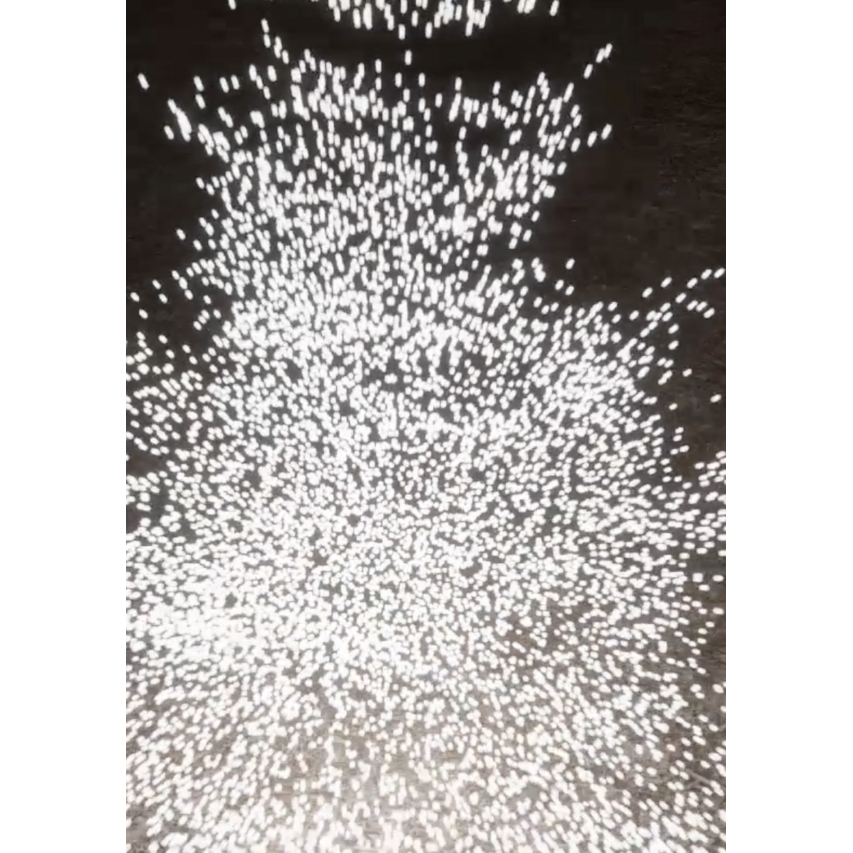
The exposition “Spotting A Tree From A Pixel” is an evocative and condensed report of the author’s research conducted as part of a wider collaborative project.The clarity of this exposition in terms of the subject, the way it is presented, and the unfolding narrative are of very high quality. The exposition is structured well in terms of both content and layout; its linear narrative flow is accompanied by high-quality audiovisual materials that thoughtfully complete the experience. The piece is a good example of an approach to exposition that prioritizes minimal complexity and clarity.
3rd place: Tobias Leibetseder, Thomas Grill, Almut Schilling, Till Bovermann
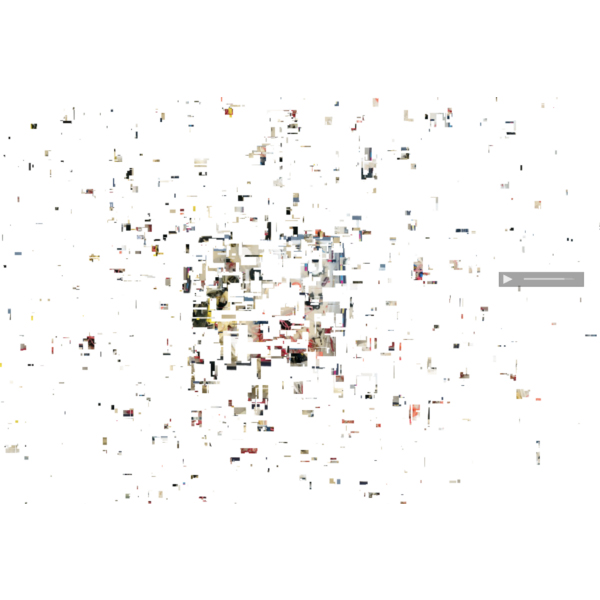 The exposition “Fragments in Time” represents a long-term collaborative research project. The exposition uses a non-linear design approach to artistic research in digital environments. It successfully explores different ways of reciprocity between the theme and content of the research – fragmentation – and the levels of the exposition. Due to the complexity of the subject, this exposition also explores shared circuits between the research catalogue and other documentation platforms.
The exposition “Fragments in Time” represents a long-term collaborative research project. The exposition uses a non-linear design approach to artistic research in digital environments. It successfully explores different ways of reciprocity between the theme and content of the research – fragmentation – and the levels of the exposition. Due to the complexity of the subject, this exposition also explores shared circuits between the research catalogue and other documentation platforms.
2021 - Winner and Shortlist
1st place: Jacek Smolicki
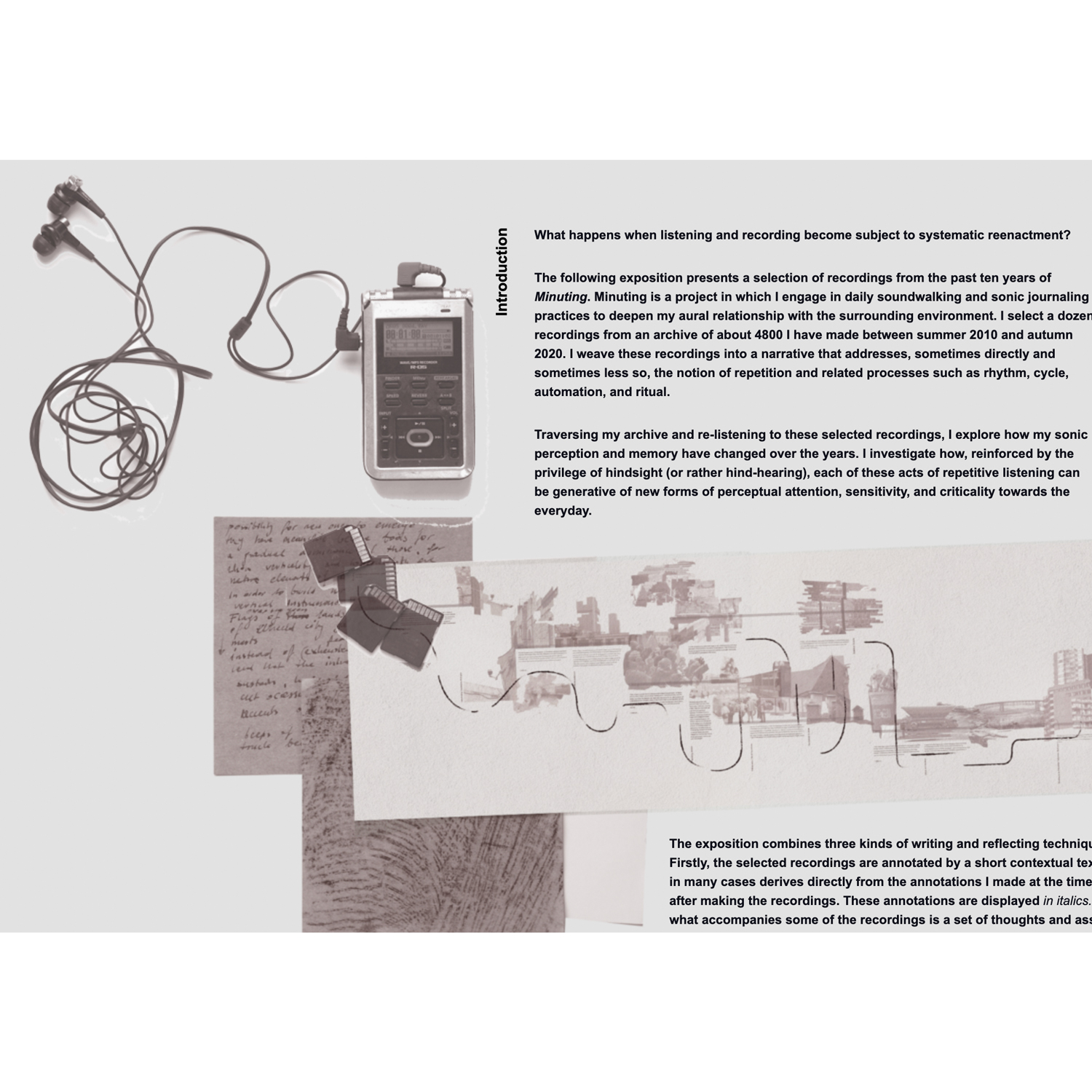 The jury was impressed by the quality of the intimate and coherent dialogue between images, text, hypertext and sound in Jacek Smolicki’s exposition “Minuting. Rethinking the Ordinary Through the Ritual of Transversal Listening”. The togetherness of these elements makes the viewer feel like walking into a complex and well-structured landscape.The layout is attractive also in means of the integration of the sound bars as graphical elements. The mouse-over elements produce an extra layer that is nevertheless integrated into the aesthetic appearance of the exposition.Smolicki’s research is wide and deep with the collection of samples spanning years presenting a compelling premise in the research. The concepts and narrative threads are emergent through the design and activation of the exposition through the Research Catalogue platform.
The jury was impressed by the quality of the intimate and coherent dialogue between images, text, hypertext and sound in Jacek Smolicki’s exposition “Minuting. Rethinking the Ordinary Through the Ritual of Transversal Listening”. The togetherness of these elements makes the viewer feel like walking into a complex and well-structured landscape.The layout is attractive also in means of the integration of the sound bars as graphical elements. The mouse-over elements produce an extra layer that is nevertheless integrated into the aesthetic appearance of the exposition.Smolicki’s research is wide and deep with the collection of samples spanning years presenting a compelling premise in the research. The concepts and narrative threads are emergent through the design and activation of the exposition through the Research Catalogue platform.
2nd place: Alexandra Crouwers
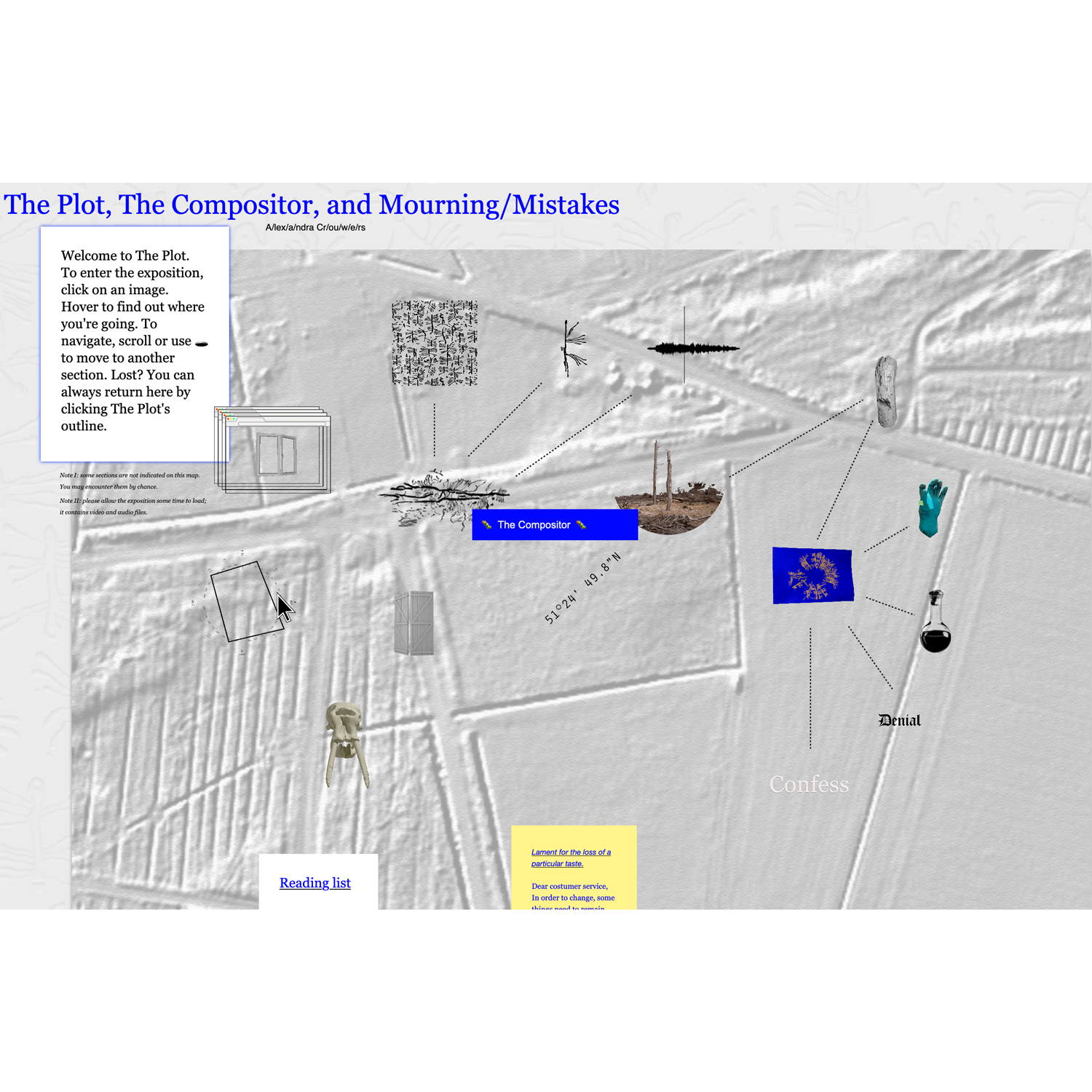 The exposition “Plot, the Compositor, Mourning/Mistakes” by Alexandra Crowers represents a speculative and non-linear design approach to the concept of exhibition. It creates an intricate network between visual pieces of evidence of the ecological collapse of a forest and a reflexive review of the artist’s grief.Crouwers’s work thesis immediately resonated with the pandemic times experiencing virtual dislocation and complex mimeticism of nature in response to lockdowns. The work presented is timely as virtual workers and artists experience the technological takeover as physical communal spaces become increasingly rare. Alexandra’s background in virtual and technical art vibrates on the Research Catalogue platform as items that function to deliver information on the topic often also serve an aesthetic purpose supporting their thesis.
The exposition “Plot, the Compositor, Mourning/Mistakes” by Alexandra Crowers represents a speculative and non-linear design approach to the concept of exhibition. It creates an intricate network between visual pieces of evidence of the ecological collapse of a forest and a reflexive review of the artist’s grief.Crouwers’s work thesis immediately resonated with the pandemic times experiencing virtual dislocation and complex mimeticism of nature in response to lockdowns. The work presented is timely as virtual workers and artists experience the technological takeover as physical communal spaces become increasingly rare. Alexandra’s background in virtual and technical art vibrates on the Research Catalogue platform as items that function to deliver information on the topic often also serve an aesthetic purpose supporting their thesis.
3rd place: Timo Menke
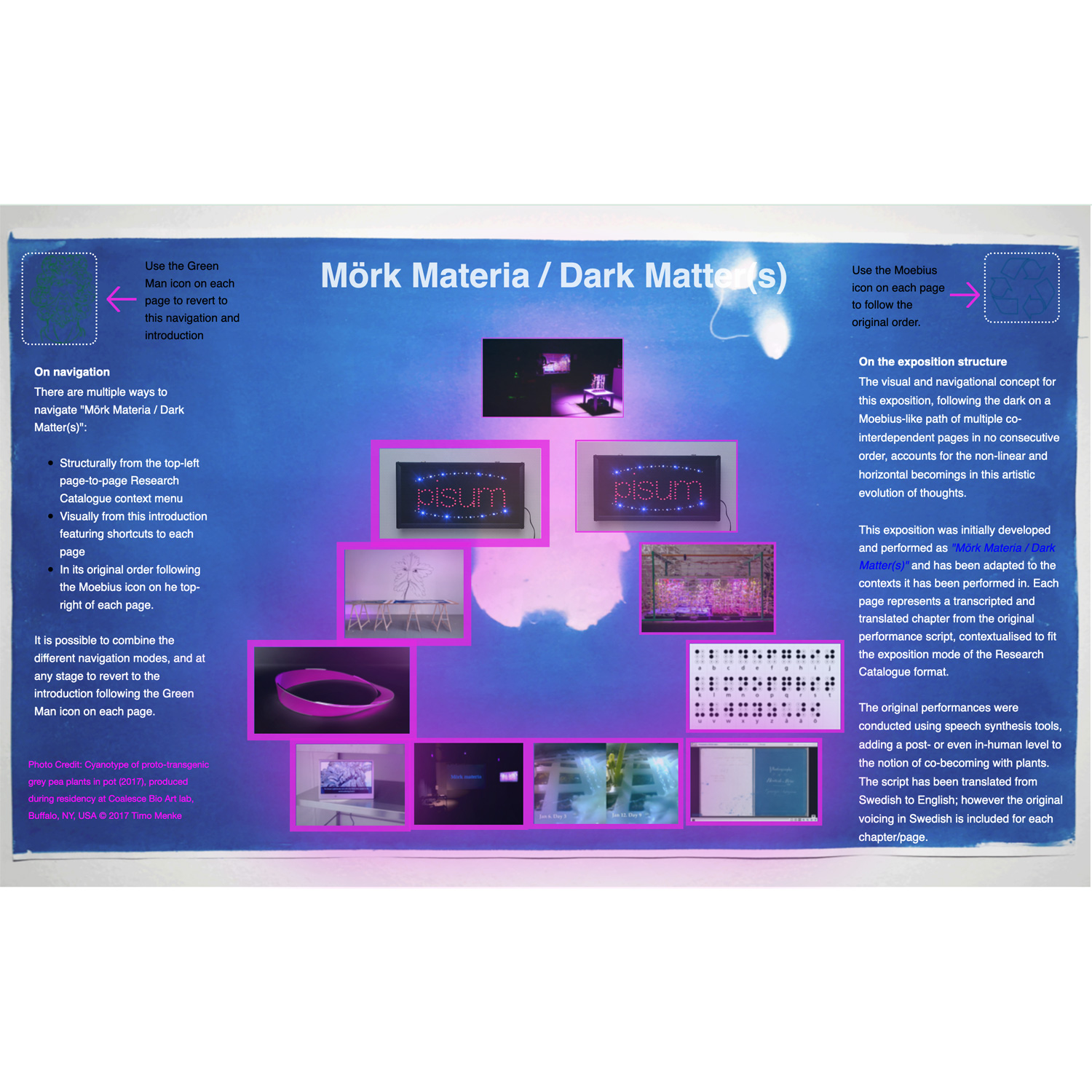 Timo Menke’s exposition DARK MATTER(S) combines different exhibitions on the same subject in an innovative way, offering the experience of different navigation modes as an analogue of thinking.Menke’s thoughtful intertwining of their exposition concepts and the Research Catalogue allows readers to accumulate concepts leading up to a wonderful collaborative performance.
Timo Menke’s exposition DARK MATTER(S) combines different exhibitions on the same subject in an innovative way, offering the experience of different navigation modes as an analogue of thinking.Menke’s thoughtful intertwining of their exposition concepts and the Research Catalogue allows readers to accumulate concepts leading up to a wonderful collaborative performance.
2020 - Winner and Shortlist
Christoph Solstreif-Pirker
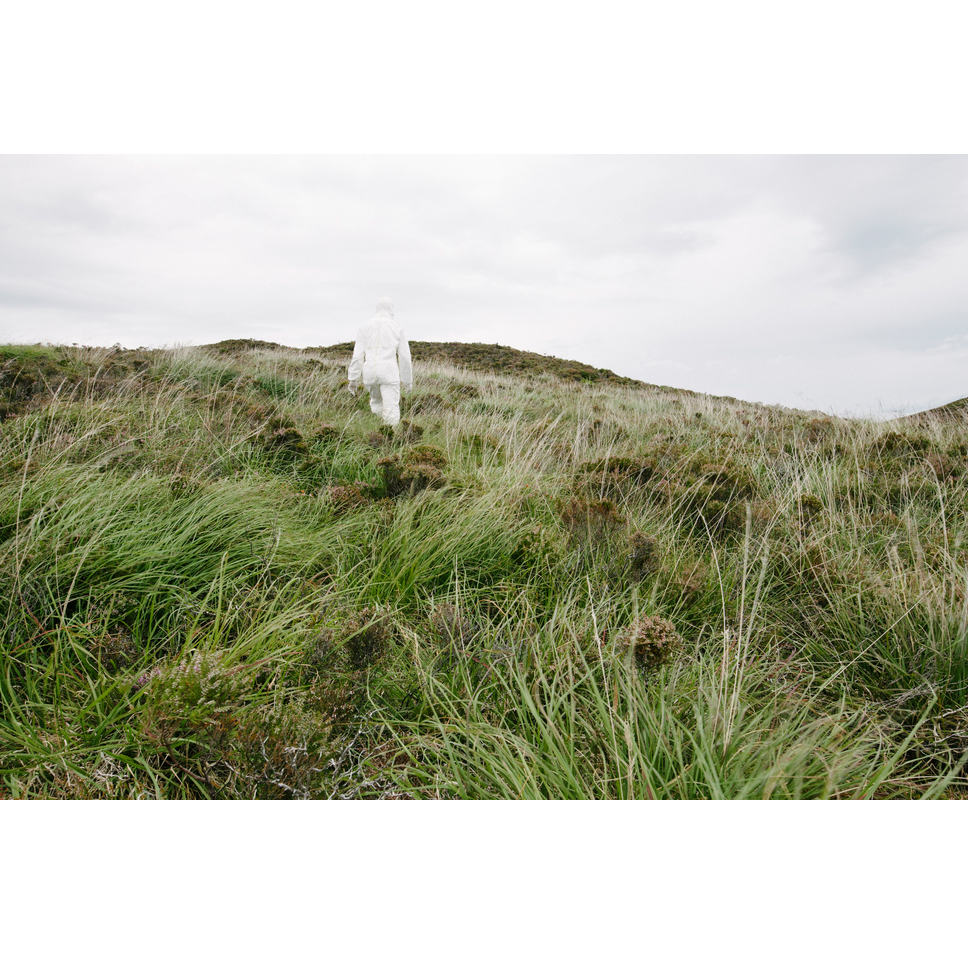 Christoph Solstreif-Pirker’s exposition presents a beautifully minimalistic use of the Research Catalogue, which effectively supports the journey of the author and his experiences during an intimate encounter with a traumatised part of our planet. The layout is simple, but elegant and effective, and the documentation within is conceptually rich and visually appealing. The layout of the exposition has clarity in the positioning of text and visual, and there is a subtle interplay and connectivity between the two because of this consideration.
Christoph Solstreif-Pirker’s exposition presents a beautifully minimalistic use of the Research Catalogue, which effectively supports the journey of the author and his experiences during an intimate encounter with a traumatised part of our planet. The layout is simple, but elegant and effective, and the documentation within is conceptually rich and visually appealing. The layout of the exposition has clarity in the positioning of text and visual, and there is a subtle interplay and connectivity between the two because of this consideration.
Ernie Roby-Tomic
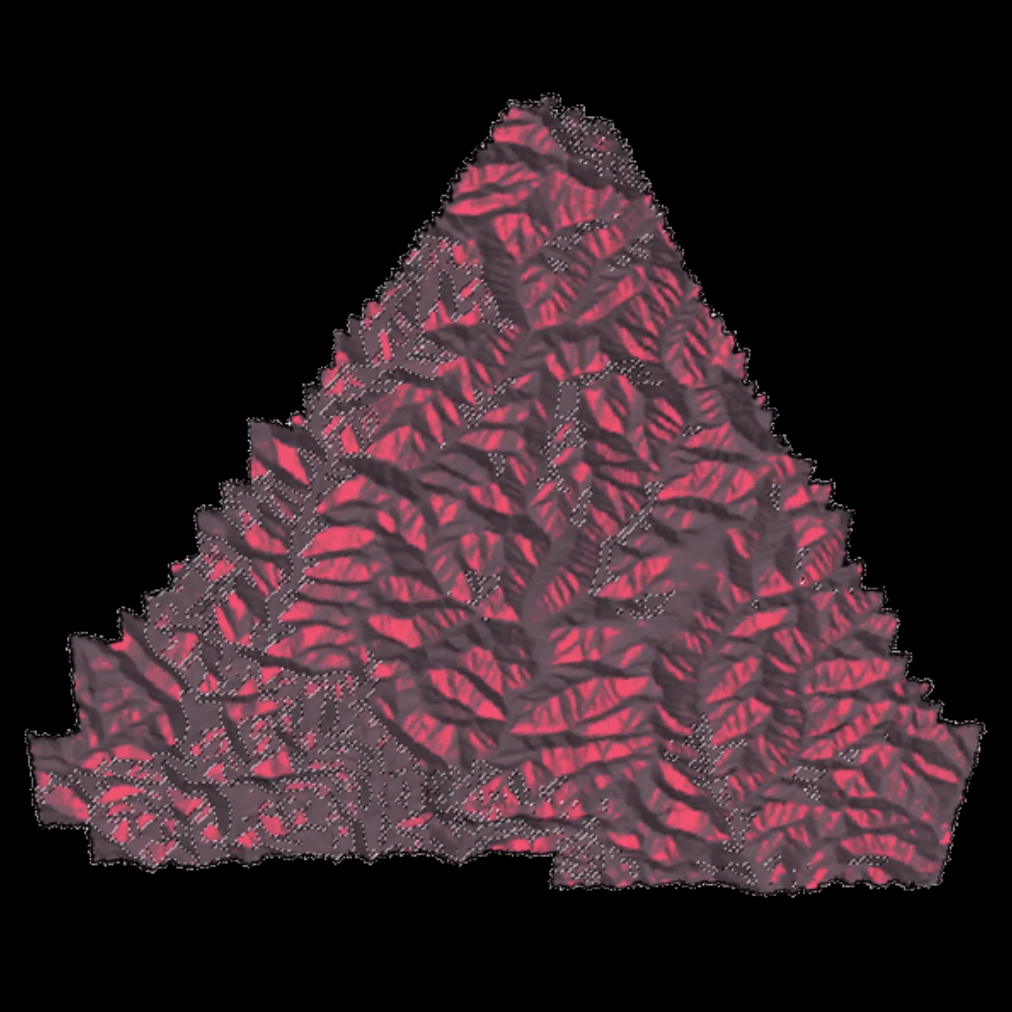 Ernie Roby-Tomic’s exposition presents a quirky and engaging critique of mining and the destruction of nature, which is cleverly underscored by taking the reader out of the usual and familiar notion of the Research Catalogue, into the experience and aesthetics of vintage computer games. The exposition deftly combines geopolitical history and artistic responses to coal mining in the Appalachia, and the layout, which includes often poetic narrative and the chattels of mining, takes advantage of the limitations of the Research Catalogue.
Ernie Roby-Tomic’s exposition presents a quirky and engaging critique of mining and the destruction of nature, which is cleverly underscored by taking the reader out of the usual and familiar notion of the Research Catalogue, into the experience and aesthetics of vintage computer games. The exposition deftly combines geopolitical history and artistic responses to coal mining in the Appalachia, and the layout, which includes often poetic narrative and the chattels of mining, takes advantage of the limitations of the Research Catalogue.
2019 - RC Prize Winner
1st place: Emma Cocker, Nikolaus Gansterer and Mariella Greil
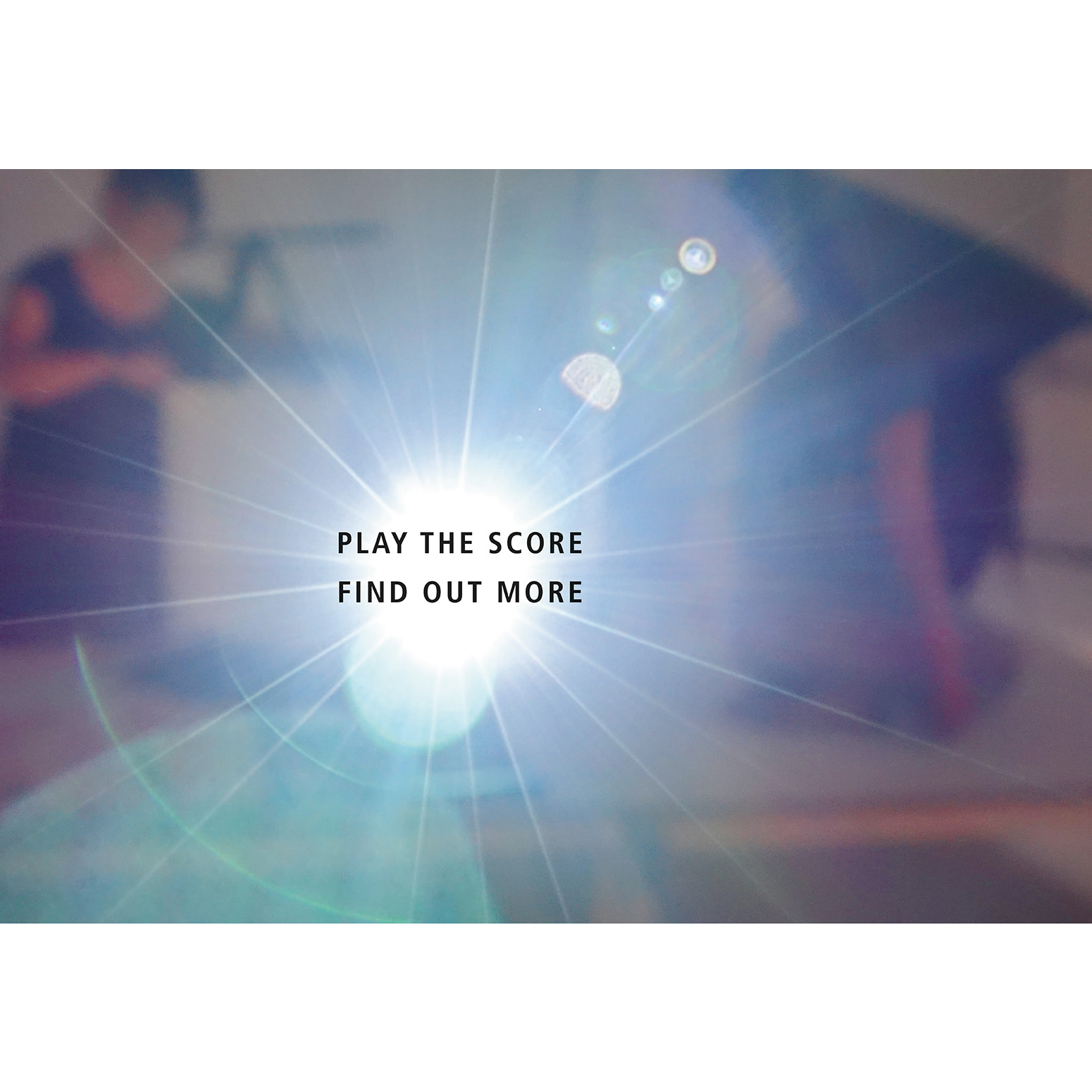 The exposition “Choreo-graphic Figures: Scoring Aesthetic Encounters” (2019) stages an encounter between choreography, drawing, sound and writing in order to explore those knowledge forms through collaborative exchange. The exposition stages the different modes of practice as an actual dialogue and collision, and derives from the findings of the research project “Choreo-graphic Figures: Deviations from the Line” (2014-2017) by Emma Cocker, Nikolaus Gansterer and Mariella Greil. The researchers seek to extend their investigation in questioning how a digital archive can be created that is capable of reflecting the durational and relational aspects of the research process.
The exposition “Choreo-graphic Figures: Scoring Aesthetic Encounters” (2019) stages an encounter between choreography, drawing, sound and writing in order to explore those knowledge forms through collaborative exchange. The exposition stages the different modes of practice as an actual dialogue and collision, and derives from the findings of the research project “Choreo-graphic Figures: Deviations from the Line” (2014-2017) by Emma Cocker, Nikolaus Gansterer and Mariella Greil. The researchers seek to extend their investigation in questioning how a digital archive can be created that is capable of reflecting the durational and relational aspects of the research process.
2018 - Winner and Shortlist
1st place: Barbara Macek
The Prize for Excellent RC Exposition 2018 was announced for the 10th International Conference on Artistic Research in Zurich on March 21st. The prize went to Investigations into the Meaning of Pain by Barbara Macek... https://www.researchcatalogue.net/view/308804/470238 ... The Executive Board of SAR nominated a jury for the prize that included Karst de Jong (The Hague/Barcelona), Leena Rouhiainen, chair (Helsinki) and Michael Schwab (London).2017 - Winner and Shortlist
1st place: Diogo Alves and Matilde Meireles
The first Prize for Excellent RC Exposition was announced for the first time at the SAR General Assembly in Plymouth on April 13th 2017. The prize for year 2017 went to Trigger Place – A Game of Sound and Architecture by Diogo Alves and Matilde Meireles: ... www.researchcatalogue.net/view/309117/309118 ... The Executive Board of SAR nominated a jury for the prize that included Karst de Jong (The Hague/Barcelona), Leena Rouhiainen, chair (Helsinki) and Michael Schwab (London). All in all, eleven submissions were offered for evaluation, out of which nine were fulfilled the criteria of having been published in 2017.ABOUT THE ANNUAL CONFERENCE
SAR organises annual international conferences and a variety of meeting formats that bring together leading practitioners, early career researchers, established scholars, distinguished academics, institutional representatives, funding bodies and policy makers.
SAR's international meetings aim to
-
Articulating the needs and representing the interests of artistic researchers and their institutions.
-
Providing opportunities for exchange, dialogue and debate at annual conferences, in person and remotely.
-
Engaging with policy makers at local, regional and international levels.
